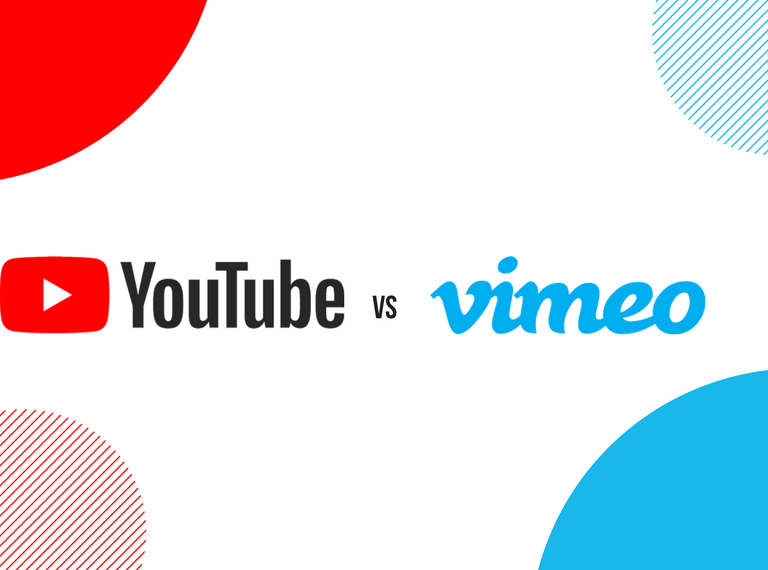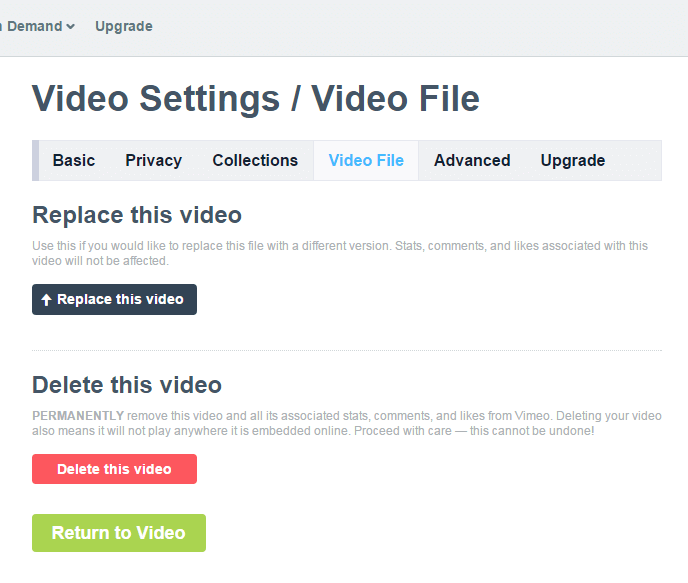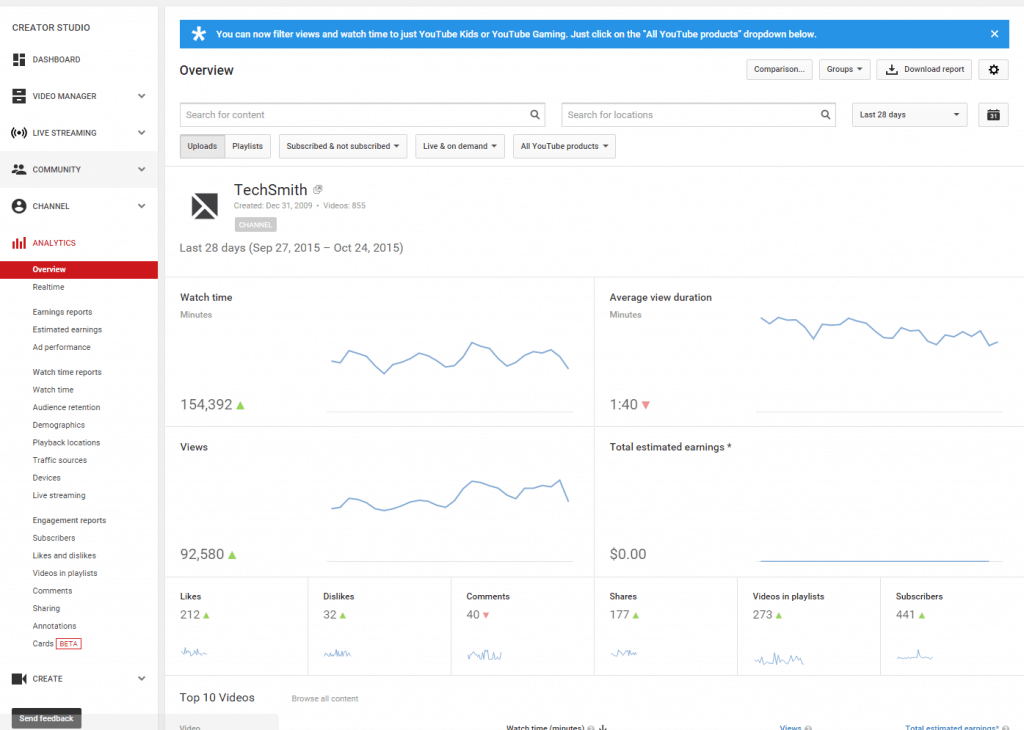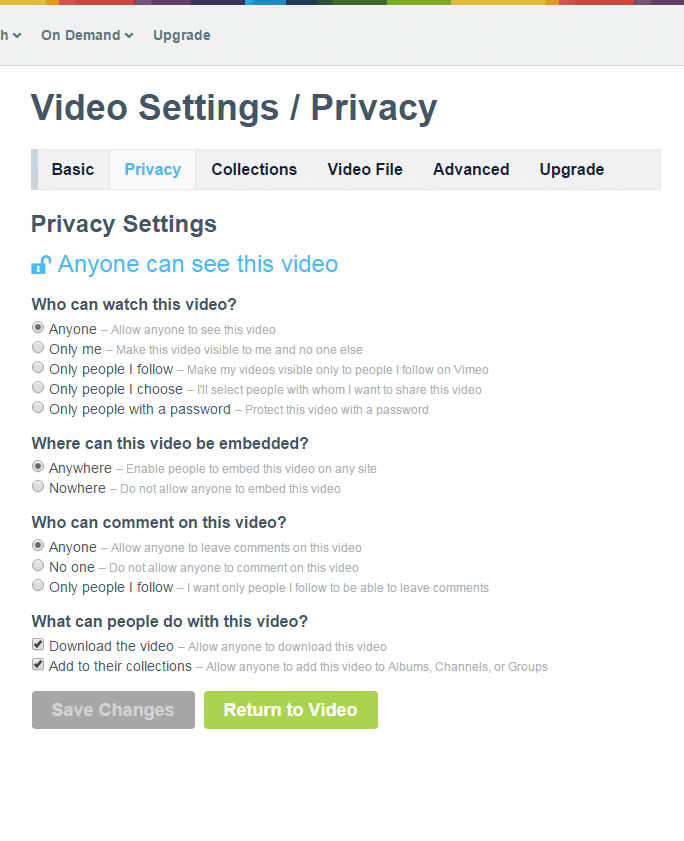
What is the difference between YouTube and Vimeo?
Author
| YouTube | Vimeo |
| Large mix of users, don’t always get constructive comments, feedback Offer free version to join and a $10/month ad free version Cannot replace a video with a new version and maintain analytics, but you can trim Ads everywhere! Can schedule release times, unlisted & private options | Mostly Mature community of users that offer constructive feedback Free, or Paid Tiers: Plus, PRO, Business – Each have varied storage limits You can replace a video without losing stats No ads Password protected option, plus many more |
Two of the most popular hosting platforms today are YouTube and Vimeo. They’re both great options for hosting. We offer YouTube outputs from Snagit and Camtasia, and Vimeo from Camtasia (Windows only). TechSmith Screencast is also a great hosting option, and has outputs from Snagit and Camtasia as well. These outputs make it simple to host your videos in the location of your preference.
There are some big differences when it comes to YouTube vs Vimeo and understanding those differences will help you select the right option for you.
The Communities
The first question I always ask myself before I ever push record on my camera: who is my audience? You should ask yourself the same question because YouTube and Vimeo have different communities of users.
YouTube’s community is large, with over 1 billion users that watch hundreds of millions of hours of content – each day! With that many people comes risks. You may run into some questionable, highly offensive users that are not afraid to tell you exactly how they feel about your video.
YouTube’s larger audience produces more content, but keep in mind that quantity doesn’t always equal quality.
Vimeo has a much smaller community. Of its 170 million viewers, about 42 million are in the United States.
Vimeo’s community is generally very supportive, and has many users that offer more constructive feedback than you may find on YouTube.
Another notable distinction between the two is that with a smaller community, you will often find higher production values.
Membership
Vimeo offers four membership options: Plus, PRO, and Business, Premium. They each have different levels of storage and support as you can see in the chart below.

Vimeo does offer a basic, free membership, but it limits you to 500MB maximum storage per week.
Alternately, you can make a YouTube video completely free with unlimited storage when it comes to hosting. YouTube focuses on making money with their advertising, not monthly or yearly payment plans like Vimeo.
That said, YouTube offers a $9.99/month subscription service called YouTube Red, which allows you to view videos without ads.
In addition to being able to watch videos ad-free, you will also have access to a slate of original programming, the ability to download videos so you can watch offline later, as well as a music app.
Updating your videos
Have you ever uploaded a video, then realized you needed to make a change to it? Vimeo allows you to replace a video after it has been uploaded without losing that video’s stats. This can be very helpful if you realize you made a mistake in your video, or something like a name needs to be updated.

On the flip-side, when you upload your video to YouTube, it cannot be changed without completely deleting the file and re-uploading. This means that you will lose all of your views and stats in the process.
If you use YouTube, double and triple check spelling and content, because once you post it, you can’t fix it! I have been hoping for a long time that YouTube will activate this feature, but so far, it hasn’t happened.
Copyrighted Material
YouTube will detect copyrighted music and images almost immediately upon upload, automatically disabling these elements if you don’t have permission to use them. This can help make sure you’re not infringing on a copyright unintentionally.
Vimeo on the other hand, isn’t as strict and won’t disable your content. If you choose Vimeo, be aware that it technically is stealing if you don’t own the rights to any media in your video. It is imperative to use good judgement when sharing your work.
Advertising
You may notice that YouTube has ads all over the place both on the website and within the video player. As a marketer, you have tons of options to reach your specific audiences with highly targeted ads on YouTube, but as a viewer it can be overwhelming.
Vimeo takes pride in keeping their site free from ads and you won’t see one playing before, during, or after your content. This is because, as I said before, they make their money on memberships.
Analytics
On the plus side, both sites offer a wide array of analytics for your video that can be extremely helpful when determining who is watching your video and how they are viewing it.
The downside is that you will have to be a Plus Vimeo member to receive the advanced analytic access (you can see a breakdown of stats available in Vimeo plans here.)
Both platforms offer stats on views, comments, likes, shares, total plays, and geographical data, but YouTube offers a little more.

YouTube also offers insight into traffic sources, gender, what devices your viewers are using, and audience retention. Another feature of YouTube is the ability to add annotations or “clickable hotspots” on top of your video that allows viewers to interact.
Privacy Options
Vimeo offers password protected content. This can be great if you are reviewing content with clients and want to keep it hidden. Vimeo offers a variety of other privacy options as well.

YouTube allows three options; public, unlisted and private. Unlisted means only those with the link can view it, while private means only those you invite with an active YouTube account can view it.
So…. Where Should I Host?
In the end, it really depends on the audience you are trying to reach because both platforms offer great resources for businesses who are expanding into the world of digital video. There are also a lot of other online video platforms to choose from now, and finding the right one depends on the features and functionality you need for your videos.
Here is a reference chart comparing the features and functionality of Vimeo, YouTube and Screencast to summarize, and you can read a more in-depth comparison of these platforms here as well.
Author
-

Support staff at Galaxy Marketing for everything social related
Has Crypto Bottomed? Learn What Analysts Say Now!
StickyCrypto
February 22, 2023
Cryptocurrency is a digital asset used as a medium of exchange. Factors influencing its price include supply & demand, news events, speculation, technical & fundamental analysis. Is crypto at its bottom? Analyze charts & underlying economic factors to make informed decisions on whether now is a good time to invest.
0 Comments9 Minutes
Is Crypto the Future? Unlock the Possibilities of Tomorrow Today!
StickyCrypto
February 22, 2023
Cryptocurrency is a digital currency that offers high security, low fees and fast transactions. NAN is a type of cryptocurrency with advantages such as no fees, instant transaction speed and smart contracts support. Discover why crypto may be the future of finance!
0 Comments8 Minutes
What is Bayc NFT? Unlock the Possibilities of Non-Fungible Tokens!
StickyNFT
February 22, 2023
Experience secure & efficient trading of digital assets with Bayc NFT! Enjoy access to liquid markets, a wide range of digital assets, low fees & more. Get in touch with us for social media marketing services today!
0 Comments10 Minutes



















